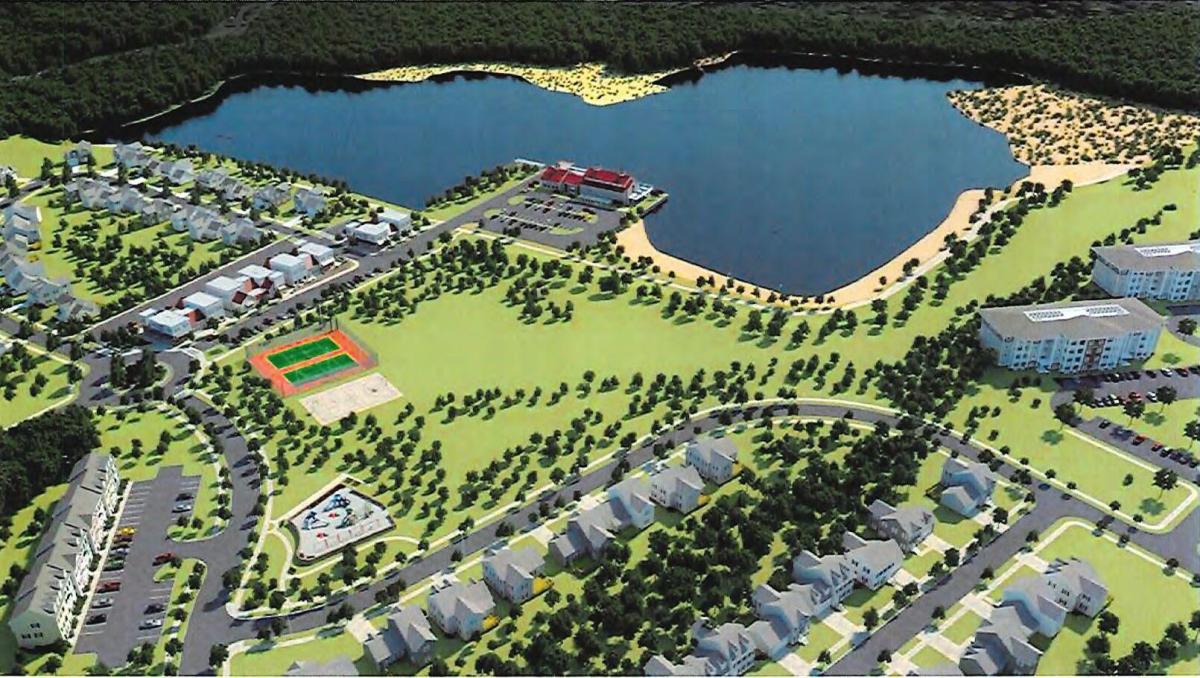We were reminded recently at a “Development, Growth and Environment” presentation that Talbot County is a special place. Talbot County Council Vice President Pete Lesher reminded us that “the rural character of the place can challenge all of us.” He’s a “zoning guy,” and his account of development and growth was comprehensive and informative, but he also made a point of reminding us that our Comprehensive Plan is being updated – and it’s “time to pay attention.”
Our Talbot County Comprehensive Plan guides all development, and the agenda for the March 8 County Council meeting included 17 possible amendments to our 2023-24 Plan. There’s an amendment to replace and upgrade Easton’s Glebe water treatment plant for an estimated $8.6M. It provides safe drinking water for all of Easton. There’s also an amendment to address Tilghman’s underperforming wastewater treatment plant (WWTP) and another to connect Bar Neck and Fairbanks to that plant, at an additional cost of $2M.
The amendments proposed total approximately $57M, and $43M was allocated to just one project: Connecting the entire Bay Hundred peninsula, including Tilghman and the villages of Sherwood, Wittman, Claiborne and McDaniel to St. Michael’s WWTP. It’s a septic elimination program for the Bay Hundred.
Talbot County Engineer Ray Clarke explained that this will reduce nitrogen emissions considerably, and funding is available through grants and from the Maryland Department of the Environment. This proposal became Resolution 319. Like the others, it will be forwarded to the Planning Commission and Public Works for approval and then be voted upon by the County Council at their April 12 meeting.
The Council’s agenda includes 17 amendments that can be accessed here: https://talbotcountymd.gov/About-Us/County_Council/council-meeting-videos
Following laughter concerning Resolution 326 being the “gifting” of the failed Wye Mills spray wastewater system to the County, Council president Callahan reminded us that the Council wants what’s best for the community and Talbot County – and an amendment to require ENR standards for wastewater treatment for the first 120 Lakeside homes was introduced.
Until Lakeside’s spray wastewater treatment plant is completed, within a period of possibly 18 months once a permit is issued, Lakeside’s first 120 homes are to be connected to Trappe’s WWTP, a currently underperforming plant scheduled to be upgraded within 3 years. Resolution 327 would supplement Trappe’s service with modular units and/or hauling methods, as required.
Councilman Corey Pack still had concerns, but would not be commenting; and Councilman Divilio would “not be supporting Resolution 327.”
Resolutions 308 and 313 were eligible for votes. 308 had been rejected by the Planning Commission and was withdrawn, but 313 was considered a good alternative. Planning Commissioner Chip Councell acknowledged that the Commission does not consider cost or politics, but “anything that improves water quality, we find consistent.” Considering the pollution in Trappe Creek, he also suggested we might all work together.
Council Vice President Lesher agreed, adding that “our constituents have concerns, and Resolution 313 is fairly narrowly focused.” But amendment #1 to 313 would be voted down, and Resolution 313 was withdrawn. Instead, a letter would be drafted to Maryland Department of the Environment confirming that Resolution 281 is alive and well – notwithstanding that the Planning Commission has reversed its approval? This letter will be reviewed at the March 22 County Council meeting.
“We’re all trying to reach the finish line in Trappe,” offered County Attorney Patrick Thomas. Resolution 313 would have prevented the connection of more homes to a system that is underperforming already. That’s all. Resolution 327 will be back to the Council for a vote on April 12.
Resolution 329 will be back, too. This one calls for a temporary moratorium on large scale solar systems in order to study and address environmental concerns. No arguments there. Perhaps that implies hope for Resolution 327.
Our County Council will be busy over the next few years. Our population has been pretty much holding steady, and our modest level of growth may not have required a great deal of oversight; but approximately 3,200 new housing units are now scheduled to be built over the next few years, and Talbot has a 2.3 average occupancy rate. That’s over 7,000 new residents.
It is also becoming easier to appreciate Councilman Lesher’s point that development where infrastructure already exists can be more cost effective; but we might also be wondering if sewer service down the Bay Hundred, although it’s a good idea environmentally, could result in far more development.
The County will certainly consider measures such as Civil Facility Ordinances or Sunset Provisions. These are commonly used in other communities so that developers are required to chip in for roads and services and contracts can be reconsidered under certain circumstances.
And hopefully in the not too distant future the County’s authority in these matters will no longer be questioned. That would be a good start.
Carol Voyles is a graphic designer/illustrator who retired to the Eastern Shore and became interested in politics. She serves as communications chair for the Talbot County Democratic Forum and lives in Easton.



Vincent De Sanctis says
Carol Voyles op-ed piece touches on a very important point: how can Talbot County find a balance between retaining the character of a rural county with infrastructure modernization that is needed. Septic systems, with few exceptions, need to be replaced in Bay Hundred. Can this change lead to development? Yes unless the County Council is smart about its approval process for new developments.
it is far from evident that the Council knows how to handle this perplexing issue. The confusion over the handling of the Lakeside development in Trappe has become farcical. But the consequences are real. Is this evidence of how the Council would handle other development projects.